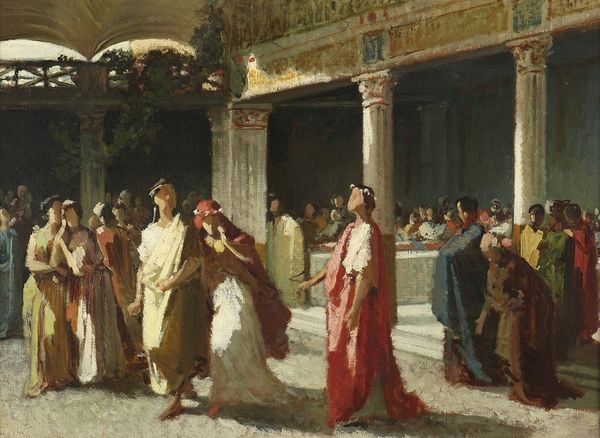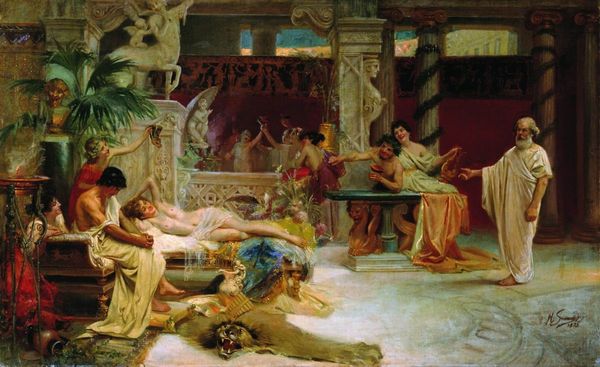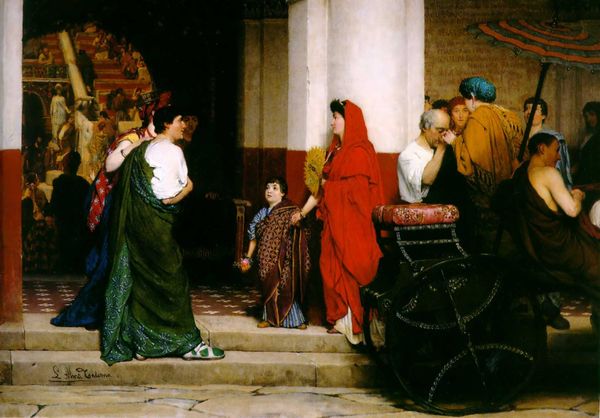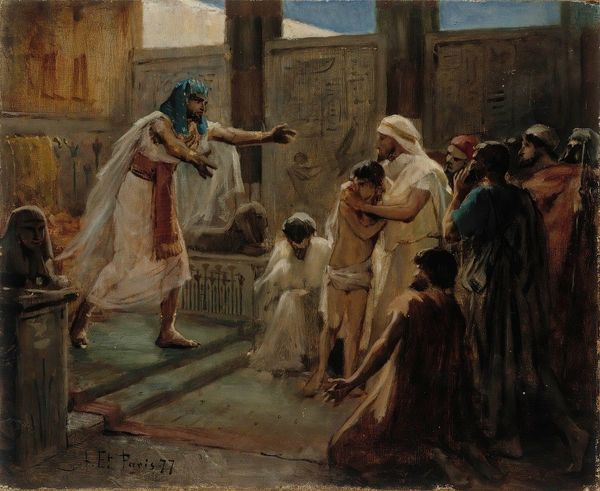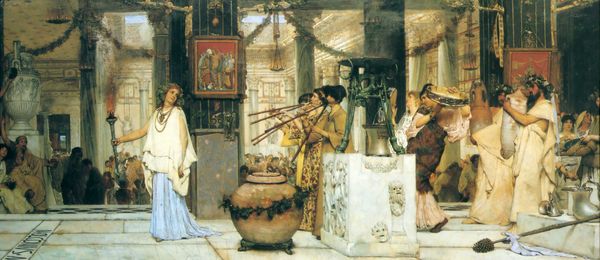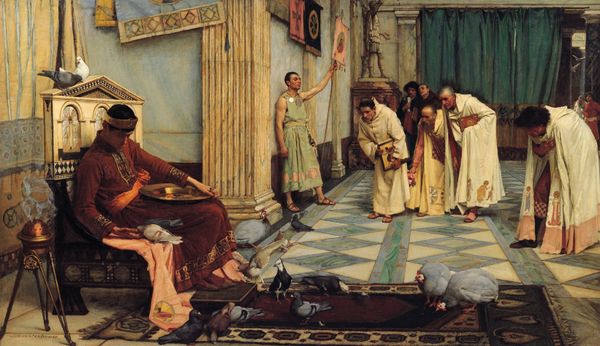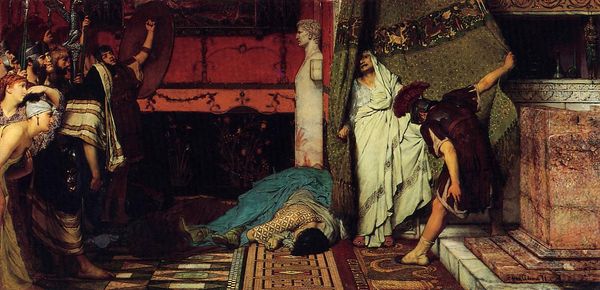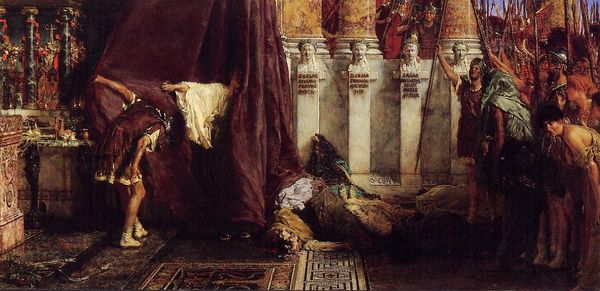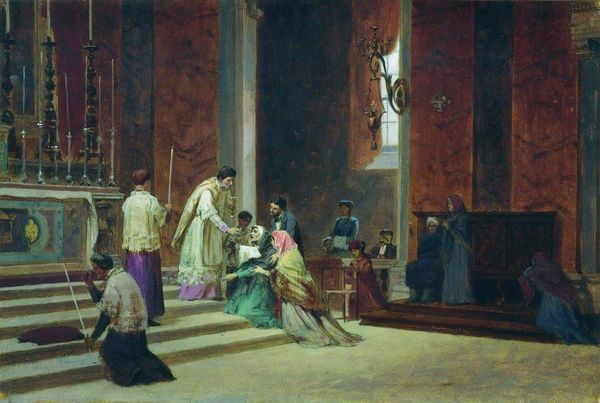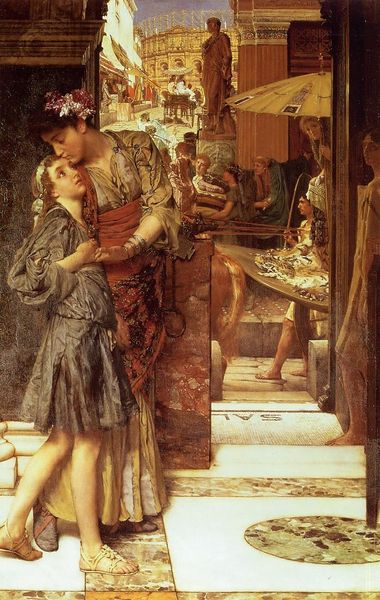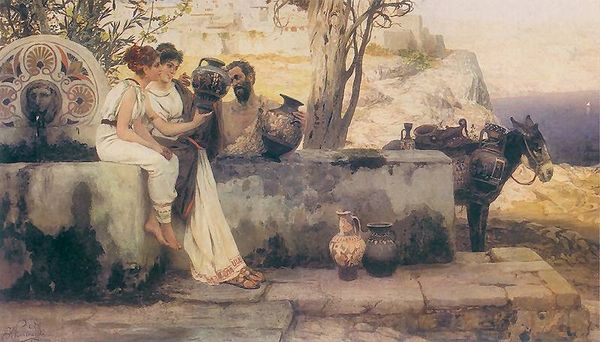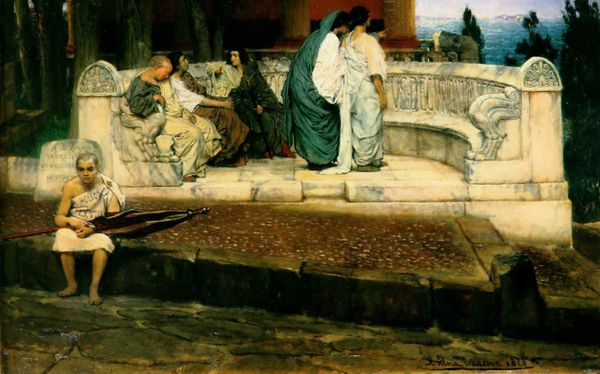
Copyright: Public domain
This piece, Caracalla, probably painted in the late 19th century by Lawrence Alma-Tadema, uses oil to conjure a scene of Roman opulence. Tadema’s touch is so smooth, almost photographic. The surface feels meticulously rendered; it’s hard to detect the hand of the artist, though if you look closely, you can see tiny, precise strokes that build up the textures of the marble and fabric. The light, diffused and warm, gives everything a soft glow, heightening the sense of luxury. It's in the details – the scattering of rose petals, the intricate mosaics – that Alma-Tadema really shines. Each petal is like a tiny burst of color, and the way they’re strewn across the floor suggests a fleeting, festive moment frozen in time. Alma-Tadema’s almost clinical precision contrasts sharply with someone like Turner, who embraced the expressive potential of paint. But in its own way, this piece celebrates a different kind of artistic engagement – one that’s about capturing the world with an almost scientific level of detail.
Comments
No comments
Be the first to comment and join the conversation on the ultimate creative platform.
